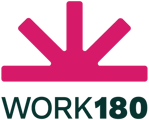What determines where an employer ranks for the various benefit groups?
Flexible and remote working
Ranked according to the total DEIA score for the following questions (generally can be considered as "the more of the following offered, the better ranked):
- Formalised policy related to flexible working arrangements in place
- Compressed working week
- Flexible start and finish times
- Job sharing arrangements
- Part-time contracts
- Rostered days off
- Time-off in lieu of overtime
- Work from anywhere (remote working) options
- Work from anywhere (remote working) permanently
- Open to candidates discussing flexible working arrangements during an interview
- Operational set up
If employers are tied on the above questions, the DEIA score for the flexible working standard is used to break the tie.
Paid time off
Ranked according to:
- Paid holiday days as the primary ranking (highest first);
- Then by personal sick leave days;
- Then by community service leave.
If employers are tied on the above ranking, the DEIA score for the flexible working standard is used to break the tie.
Paid parental leave
Ranked according to the sum of the following (highest value first):
- Paid primary carer leave;
- Paid secondary carer leave;
- Paid adoption/kinship/etc. leave.
If employers are tied on the above ranking, the DEIA score for the shared caring responsiblity standard is used to break the tie.
Women in leadership
Ranked according to:
- Closest to 50% representation for women in senior leadership;
- Then by closest to 50% representation for women in people management.
If employers are tied on the above ranking, the DEIA score for the representative leadership standard is used to break the tie.
Pay equity
Ranked according to:
- Closest to 0% gender pay gap;
- Then by closest to 50% representation for women in senior leadership.
If employers are tied on the above ranking, the DEIA score for the pay equity standard is used to break the tie.
Career development
Ranked according to the total DEIA score for the following questions (generally can be considered as "the more of the following offered, the better ranked):
- Approaches to identify, track and embed a focus on career development for employees
- Individual career development incentives and rewards
- Initiatives to promote career development
- Career development opportunities
If the above are tied, we then use the closest to 50% for number of women promoted (note this isn't displayed) and if still tied, the DEIA score for the career development standard is used.
Policies and support
Ranked according to the total DEIA score for the following questions (generally can be considered as "the more of the following offered, the better ranked):
- Flexible working policy
- Preventing and responding to sexual harassment in the workplace
- Managing racism in the workplace
- Diverse and inclusive hiring
- Non-gendered parental leave
- Accommodations policy or Reasonable adjustment policy
- Domestic and family violence
- Non-gendered dress code policy
- Women experiencing menopause
- Individuals undergoing a gender transition
- Reconciliation action plan (RAP) or policy (AU only)
- Recruitment strategy to increase and/or maintain the representation of women
- Strategies to support diverse and inclusive hiring
- Inclusive hiring training for managers frequency
- Employee-led groups or ERGs to support and champion women
- Employee-led groups or ERGs to support and champion under-represented racial or ethnic groups
- Initiatives to capture and engage diverse employee voices
- Supporting the inclusion of individuals with visible or invisible disabilities
- Managing racism in the workplace
- Inclusive culture
- Diversity and inclusion education and training programs
- Plus who receives the training
- Health insurance plans offered to staff
- Mental health and wellbeing support
If employers are tied on the above ranking, the DEIA scores for the inclusing hiring and inclusive & anti-discriminatory culture standards are used to break the tie.
